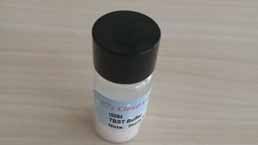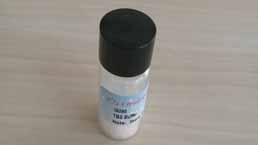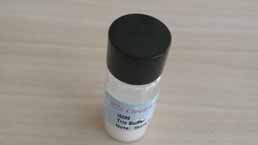Polyclonal Antibody to Procollagen I C-Terminal Propeptide (PICP) 

P1CP; C-Propeptide Of Type I Procollagen; Procollagen I Carboxy Terminal Propeptide
Overview
Properties
- Product No.PAA570Hu08
- Organism SpeciesHomo sapiens (Human) Same name, Different species.
- ApplicationsWB; IHC; ICC; IP.
If the antibody is used in flow cytometry, please check FCM antibodies.
Research use only - DownloadInstruction Manual
- CategoryMetabolic pathwayHepatologyBone metabolism
- SourcePolyclonal antibody preparation, Host Rabbit
- Ig Type IgG, Potency n/a
- PurificationAntigen-specific affinity chromatography followed by Protein A affinity chromatography
- LabelNone
- Immunogen CPA570Hu21-OVA Conjugated Procollagen I C-Terminal Propeptide (PICP)
- Buffer FormulationPBS, pH7.4, containing 0.02% NaN3, 50% glycerol.
- TraitsLiquid, Concentration 0.5mg/mL
Sign into your account
Share a new citation as an author
Upload your experimental result
Review

Contact us
Please fill in the blank.
Specifity
The antibody is a rabbit polyclonal antibody raised against PICP. It has been selected for its ability to recognize PICP in immunohistochemical staining and western blotting.
Usage
Western blotting: 0.01-2µg/mL;
Immunohistochemistry: 5-20µg/mL;
Immunocytochemistry: 5-20µg/mL;
Optimal working dilutions must be determined by end user.
Storage
Store at 4°C for frequent use. Stored at -20°C in a manual defrost freezer for two year without detectable loss of activity. Avoid repeated freeze-thaw cycles.
Stability
The thermal stability is described by the loss rate. The loss rate was determined by accelerated thermal degradation test, that is, incubate the protein at 37°C for 48h, and no obvious degradation and precipitation were observed. The loss rate is less than 5% within the expiration date under appropriate storage condition.
Giveaways
Increment services
Citations
- Dyslipidemic high-fat diet affects adversely bone metabolism in mice associated with impaired antioxidant capacityScienceDirect: S0899900709004717
- Serum markers of deranged myocardial collagen turnover: their relation to malignant ventricular arrhythmias in cardioverter-defibrillator recipients with heart failure.PubMed: 23067911
- Circulating biomarkers of collagen metabolism in arterial hypertension: relevance of target organ damagePubmed: 23615327
- Cdkn1a is a key mediator of rat pancreatic stellate cell senescencePubmed: 23719597
- Relation of burden of myocardial fibrosis to malignant ventricular arrhythmias and outcomes in Fabry diseasePubmed:25073565
- An NMR Metabolomic Study on the Effect of Alendronate in Ovariectomized MicePubmed:25184758
- The Anti-Osteoanabolic Function of Sclerostin is Blunted in Mice Carrying a High Bone Mass Mutation of Lrp5Pubmed:25640331
- The active role of osteoporosis in the interaction between osteoblasts and bone metastasesPubMed: 26057367
- Consumption of vitamin D2PubMed: 25792284
- Bilaterale Kommunikation zwischen Osteoblasten und Osteoklastenvolltexte:2016
- Fibrosis of extracellular matrix is related to the duration of the disease but is unrelated to the dynamics of collagen metabolism in dilated cardiomyopathypubmed:27516211
- Left ventricular reverse remodeling is not related to biopsy-detected extracellular matrix fibrosis and serum markers of fibrosis in dilated cardiomyopathy, regardless of the definition used for LVRRpubmed:28004175
- The association between insulin-like growth factor 1 (IGF-1), IGF-binding proteins (IGFBPs), and the carboxyterminal propeptide of type I procollagen (PICP) in pre- and postmenopausal women with rheumatoid arthritis.pubmed:27775453
- Effect of montelukast on markers of airway remodeling in children withasthma.pubmed:27657514
- The association between insulin-like growth factor 1 (IGF-1), IGF-binding proteins (IGFBPs), and the carboxyterminal propeptide of type I procollagen (PICP) in pre- and postmenopausal women with rheumatoid arthritisloi:irhe20
- Conditional Mouse Models Support the Role of SLC39A14 (ZIP14) in Hyperostosis Cranialis Interna and in Bone HomeostasisISBN: 978-94-6299-582-6
- Endothelial‑to‑mesenchymal transition in human idiopathic dilated cardiomyopathypubmed:29115553
- Age-related changes in biochemical bone profile in thalassemic childrenpubmed:28967496
- Left ventricular reverse remodeling is not related to biopsy‑detected extracellular matrix fibrosis and serum markers of fibrosis in dilated cardiomyopathy, regardless of the definition used for LVRR10.1007/s00380-016-0930-y
- The Lrp4 R1170Q homozygous knock‐in mouse recapitulates the bone phenotype of sclerosteosis in humanspubmed:28477420
- 12-month patterns of serum markers of collagen synthesis, transforming growth factor and connective tissue growth factor are similar in new-onset and chronic dilated cardiomyopathy in patients both with and without cardiac fibrosis.pubmed:28460256
- Prognostic value of fibrosis-related markers in dilated cardiomyopathy: A link between osteopontin and cardiovascular events.pubmed:29120858
- Mutations That Alter the Carboxy‐Terminal‐Propeptide Cleavage Site of the Chains of Type I Procollagen Are Associated With a Unique Osteogenesis Imperfecta …Pubmed:29669177
- Assessment of myocardial fibrosis by late gadolinium enhancement imaging and biomarkers of collagen metabolism in chronic rheumatic mitral regurgitation.Pubmed:29443354
- DNA methylation regulates α‐smooth muscle actin expression during cardiac fibroblast differentiationPubmed: 30362530
- Altered serum levels of type I collagen turnover indicators accompanied by IL-6 and IL-8 release in stable COPDPubmed: 30655663
- Low fibrosis biomarker levels predict cardiac resynchronization therapy responsePubmed: 30988339
- Agonist-induced activation of the S1P receptor 2 constitutes a novel osteoanabolic therapy for the treatment of osteoporosis in micePubmed: 31028959
- Deficiency of sphingosine-1-phosphate receptor 3 does not affect the skeletal phenotype of mice lacking sphingosine-1-phosphate lyasePubmed: 31314788
- Mice lacking plastin-3 display a specific defect of cortical bone acquisitionPubmed: 31678489
- Type 2 Diabetes Mellitus and Chronic Heart Failure with Midrange and Preserved Ejection Fraction: A Focus on Serum Biomarkers of FibrosisPubmed: 33224989
- Piezo1 Inactivation in Chondrocytes Impairs Trabecular Bone FormationPubmed: 33180356
- Microbiome changes in patients with chronic heart failure with preserved ejection fraction correlate with fibrosis markers: Description of a Russian cohort
- Ассоциации толщины эпикардиального жира и циркулирующих маркеров фиброза миокарда у пациентов с инфарктом миокарда
- Early diagnosis of myocardial fibrosis in patients with epicardial obesity
- Association between Markers of Fibrosis and Heart Failure Incidence in Patients with Type 2 Diabetes Mellitus34778465
- Extra Cellular Matrix Deposition and Assembly in Dermis Spheroids34321901
- Dual integrin αvβ3 and αvβ5 blockade attenuates cardiac dysfunction by reducing fibrosis in a rat model of doxorubicin-induced cardiomyopathy34296634
- Effects of 8-week increment aerobic exercise program on bone metabolism and body composition in young non-athletesPubmed:35141785
- Simple Predictors for Cardiac Fibrosis in Patients with Type 2 Diabetes Mellitus: The Role of Circulating Biomarkers and Pulse Wave VelocityPubmed:35628969













